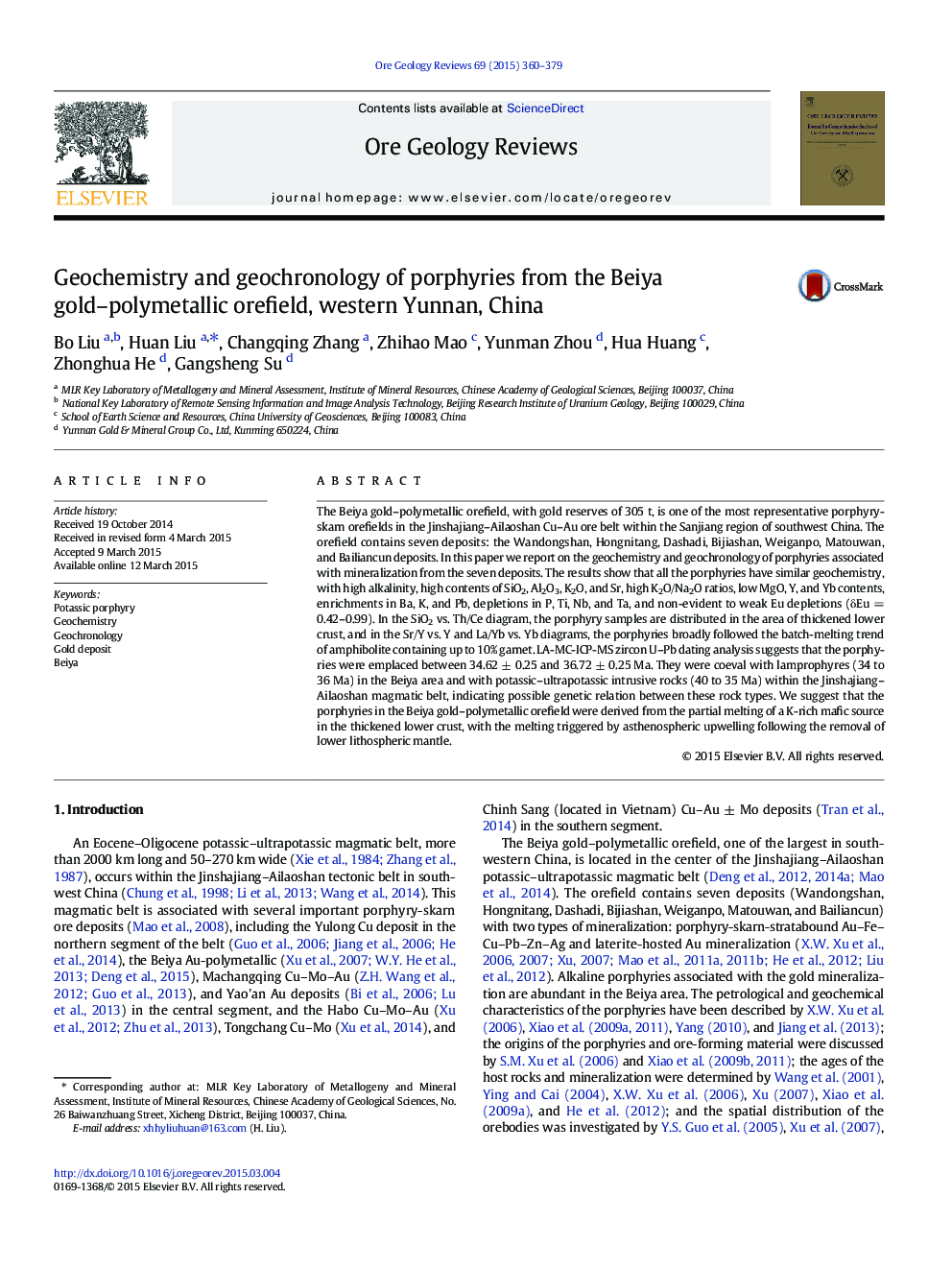| کد مقاله | کد نشریه | سال انتشار | مقاله انگلیسی | نسخه تمام متن |
|---|---|---|---|---|
| 4697325 | 1637235 | 2015 | 20 صفحه PDF | دانلود رایگان |
• The porphyries in Beiya gold polymetallic deposit were emplaced at ca. 34–37 Ma.
• The porphyries were derived from partial melting of the thickened lower crust.
• The melting is due to asthenosphere upwelling following lithospheric mantle removal.
The Beiya gold–polymetallic orefield, with gold reserves of 305 t, is one of the most representative porphyry-skarn orefields in the Jinshajiang–Ailaoshan Cu–Au ore belt within the Sanjiang region of southwest China. The orefield contains seven deposits: the Wandongshan, Hongnitang, Dashadi, Bijiashan, Weiganpo, Matouwan, and Bailiancun deposits. In this paper we report on the geochemistry and geochronology of porphyries associated with mineralization from the seven deposits. The results show that all the porphyries have similar geochemistry, with high alkalinity, high contents of SiO2, Al2O3, K2O, and Sr, high K2O/Na2O ratios, low MgO, Y, and Yb contents, enrichments in Ba, K, and Pb, depletions in P, Ti, Nb, and Ta, and non-evident to weak Eu depletions (δEu = 0.42–0.99). In the SiO2 vs. Th/Ce diagram, the porphyry samples are distributed in the area of thickened lower crust, and in the Sr/Y vs. Y and La/Yb vs. Yb diagrams, the porphyries broadly followed the batch-melting trend of amphibolite containing up to 10% garnet. LA-MC-ICP-MS zircon U–Pb dating analysis suggests that the porphyries were emplaced between 34.62 ± 0.25 and 36.72 ± 0.25 Ma. They were coeval with lamprophyres (34 to 36 Ma) in the Beiya area and with potassic–ultrapotassic intrusive rocks (40 to 35 Ma) within the Jinshajiang–Ailaoshan magmatic belt, indicating possible genetic relation between these rock types. We suggest that the porphyries in the Beiya gold–polymetallic orefield were derived from the partial melting of a K-rich mafic source in the thickened lower crust, with the melting triggered by asthenospheric upwelling following the removal of lower lithospheric mantle.
Journal: Ore Geology Reviews - Volume 69, September 2015, Pages 360–379
